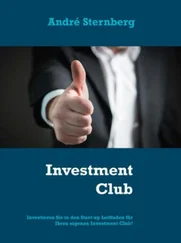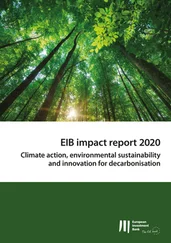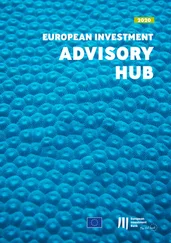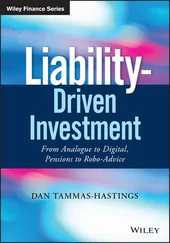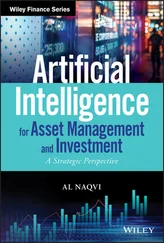Given the current economic environment, our results suggest that government investment could drop substantially if past fiscal consolidation patterns prevail. For the euro area, for example, the surprise decline in GDP is about 8 percentage points this year, suggesting that government investment could fall by more than a quarter over the next couple of years. Admittedly, the contraction may be smaller. We measure growth surprise as the two-year ahead forecast error in the IMF’s World Economic Outlook. Relative to forecasts made in 2019, GDP growth is likely to be surprisingly large in 2021. However, according to our analysis, the response of public investment to surprise increases in GDP is smaller, and statistically far less significant, compared to the response following a surprise drop in GDP.
Current forecasts predict that government investment will increase in most regions, at least in nominal terms, despite the pandemic shock ( Table 3, main text). This would mark a welcome break with the past. Cutting government investment is not an option. Government investment as a share of GDP approached a 25-year low in most EU countries (EIB, 2019). Public infrastructure needs modernising in many countries (EIB, 2017 and EIB, 2018). Digitalisation and dealing with climate change also require large public investments over the coming decades.
Conclusion and policy implications
The pandemic may continue to weigh on investment well after governments lift restrictive measures.With the partial economic rally of the third quarter of 2020 curtailed by a second wave of infections across the European Union, uncertainty about the pandemic and the economic recovery is running high. Even if governments refrain from imposing too many restrictions, investment is unlikely to pick up.
The corporate sector needs creative measures.Whole industries are affected by the declining cash flows resulting from collapsed demand. Lower sales are depleting firms’ cash reserves and, ultimately, their capital and net worth. Some companies can endure a long period of subdued cash flows, because they have large cash buffers and good business prospects that allow them to borrow. The majority, however, will struggle to keep afloat and to invest to maintain competitiveness (see Chapter 3). Standard guarantee programmes and subsidised loans are only part of the solution for these companies, as they cannot take on more debt. Firms need fresh capital, but it will take time to be generated from retained earnings, if at all. Capital may also not be readily available from private investors either, given the size of the European private equity market. Government intervention, which includes providing equity or quasi-equity investments along with debt restructuring, would help significantly. A multitude of proposals are circulating about the right course to take, while maintaining appropriate incentives and reducing moral hazard (Blanchard, Philippon and Pisani-Ferry, 2020; Boot, et al., 2020).
The lift-off of infrastructure investment is at stake.It took five years of economic expansion for the growth rate in infrastructure investment to turn positive. Investment in 2019 was still well below the level seen in many countries before the global financial crisis.[19] The resurgence was due to increased investment from both the private sector and the government. Sustained high levels of uncertainty, along with mounting government deficits, could derail infrastructure investment, however. Policymakers need to focus on reassuring the private sector so that it will continue investing and implementing the current pipeline of planned infrastructure investment.
While government investment plans remain ambitious, past experience sounds a note of caution.The aggregate EU government deficit in the second quarter of 2020 was -11.4% of GDP. At the same time, government debt increased by 8.4 percentage points of GDP to 87.8% of GDP. The European Commission expects the ratio of government debt to GDP in the European Union to increase by a further 7.3 percentage points in 2020, before shedding 2 percentage points in 2021. While current market conditions, along with large-scale support from the European Central Bank, are conducive to increasing debt, history shows that markets can swing suddenly and may force through a round of fiscal consolidation. In the past, episodes of fiscal consolidation have been very detrimental to government investment. That said, the latest budgetary plans submitted by Member States to the European Commission provide some reassurance that governments are trying to avoid reducing their investments, at least for the time being.
Alesina, A. and Ardagna, S. (2013). “The Design of Fiscal Adjustments.” In: J. R. Brown, Tax Policy and the Economy . University of Chicago Press, pp. 19-67.
Bernanke, B. and Gertler, M. (1989). “Agency Costs, Net Worth, and Business Fluctuations.” American Economic Review , Vol. 79(1), pp. 14-31.
Blanchard, O., Philippon, T. and Pisani-Ferry, J. (2020). “A New Policy Toolkit Is Needed as Countries Exit COVID-19 Lockdowns.” Policy Brief 20-8, Peterson Institute for International Economics.
Blöchliger, H., Song, D.-H. and Sutherland, D. (2012). “Fiscal consolidation: Part 4. Case studies of large fiscal consolidation episodes.” OECD Economics Department Working Papers , ECO/WKP(2012)12.
Bloom, N. (2014). “Fluctuations in Uncertainty.” Journal of Economic Perspectives , Vol. 28(2), pp. 153–176.
Bloom, N., Bond, S. and van Reenen, J. (2007). “Uncertainty and Investment Dynamics.” Review of Economic Studies , Vol. 74, pp. 391-415.
Boot, A., Carletti, E., Kotz, H.-H., Krahnen, J. P., Pelizzon, L. and Subrahmanyam, M. (2020). “Corona and Financial Stability 3.0: Try Equity-Risk Sharing for Companies, Large and Small.” SAFE Policy letter No 81.
Butzen, P., Fuss, C. and Vermeulen, P. (2003). “The Impact of Uncertainty on Investment Plans.” National Bank of Belgium: Working Paper Research 24.
European Commission (2020). “Report on Public Finances in EMU.” Brussels: European Commission.
European Investment Bank (2015). “Investment and Investment Finance in Europe: Investing in Competitiveness.” Luxembourg: European Investment Bank.
European Investment Bank (2016). “Investment and Investment Finance in Europe: Financing Productivity Growth.” Luxembourg: European Investment Bank.
European Investment Bank (2017). Investment Report 2017/2018: from recovery to sustainable growth. Luxembourg: European Investment Bank.
European Investment Bank (2018). Investment Report 2018/2019: retooling Europe’s economy. Luxembourg: European Investment Bank.
European Investment Bank (2019). Investment Report 2019/2020: accelerating Europe’s transformation. Luxembourg: European Investment Bank.
Guiso, L. and Parisi, G. (1999). “Investment and Demand Uncertainty.” Quarterly Journal of Economics, Vol. 114(1), pp. 185-227.
IMF (2020). “Fiscal Monitor: Policies for the Recovery.” Washington: International Monetary Fund.
Jordà, Ò. (2005). “Estimation and Inference of Impulse Responses by Local Projections.” American Economic Review, Vol. 95(1), pp. 168-182.
Joseph, A., Kneer, C., van Horen, N. and Saleheen, J. (2020). “All you need is cash: corporate cash holdings and investment after the financial crisis.” Bank of England Staff Working Paper No. 843.
Leahy, J. and Whited, T. (1996). “The Effect of Uncertainty on Investment: Some Stylized Facts.” Journal of Money, Credit and Banking, Vol. 28(1), pp. 64-83.
Lian, W., Presbitero, A. F. and Wiriadinata, U. (2020). “Public Debt and r - g at Risk.” IMF Working paper , No 20/137.
Читать дальше

